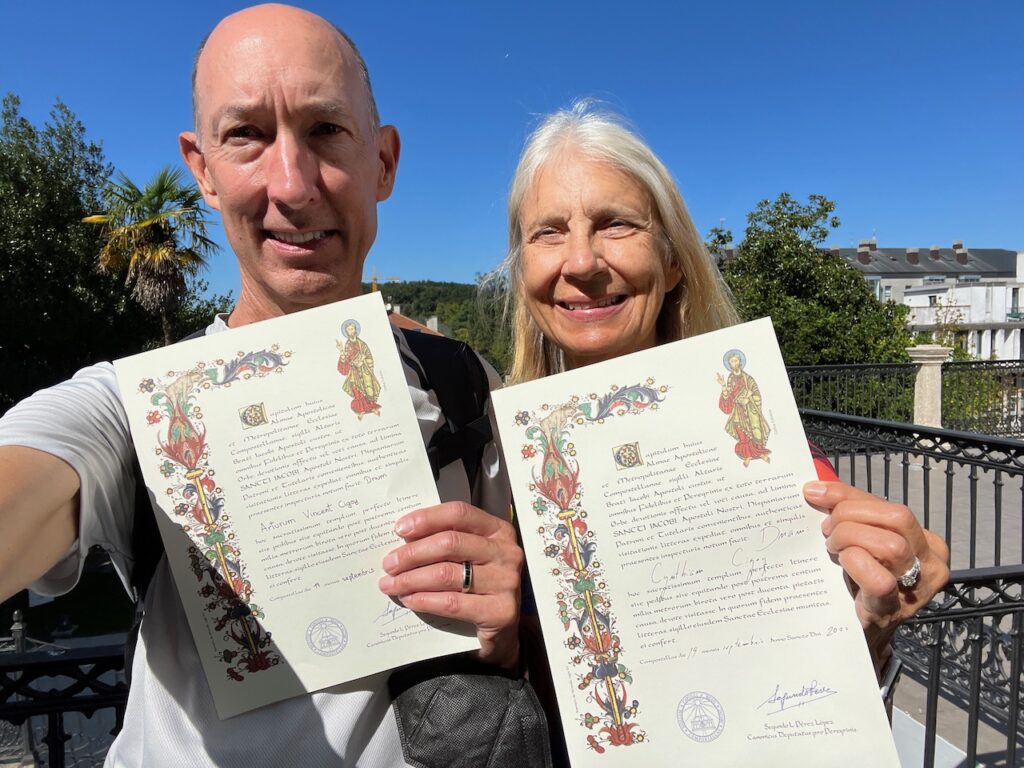
The Camino de Santiago is a network of pilgrim routes leading to the shrine of the apostle Saint James the Great in the Cathedral of Santiago de Compostela in northwestern Spain. Tradition holds that the remains of the apostle are buried there.
Cindy and I had often talked about doing one of the routes and with some advice from a seasoned traveler we chose the Camino Portuguese, the second most traveled route after the Camino Frances.
The whole Camino Portuguese is 643 km, rather than spend a month on the trail we chose to do an abbreviated version of 100 km which is the minimum distance that allows you to receive recognition in the form of a “Compostela” certificate issued by the Chapter of the Cathedral of Santiago.
We used the trip provider CaminoWays for our night’s lodging and luggage transfers so we could head out each day carrying only what we needed for that day’s walk and knowing we had a place to sleep that night.
Our daily walks varied from 5 miles to 15 miles. Most rural legs had one or two cafes along the way.
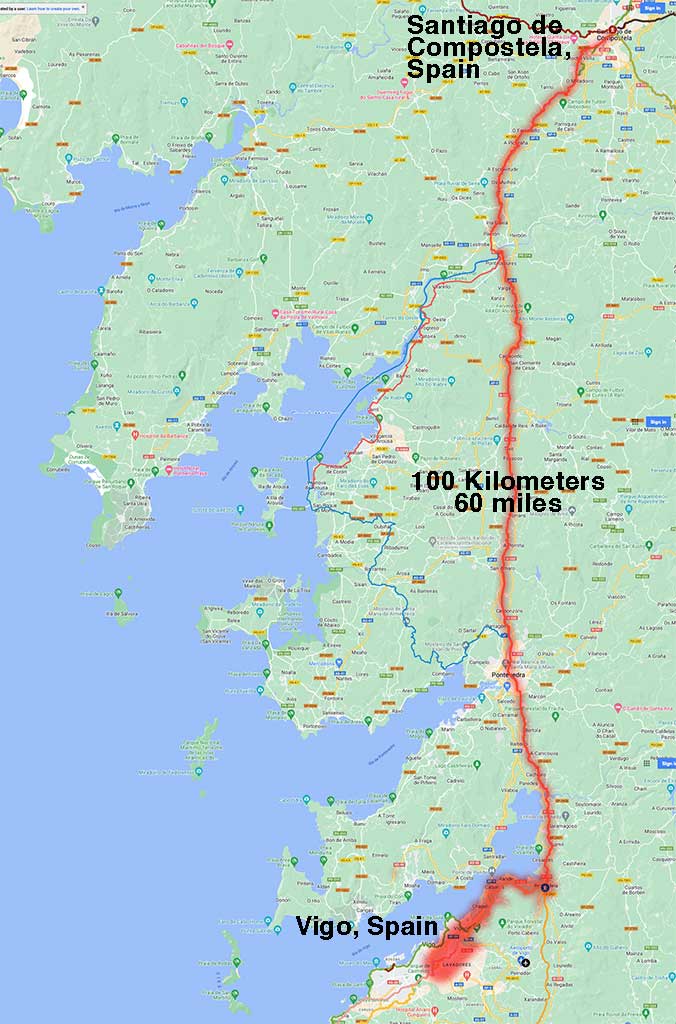
Our walk started mid-September in Vigo, Spain an Atlantic Ocean port city with a population of about 250,000. There was a bit of rain, luckily we had rain coats, pants and waterproof shoes. As we walked along the marked path suburban Vigo gave way to woods. This part of the route is high above the Ria De Vigo waterway. Our destination was Redondela, Spain, 9.3 miles from our start point.
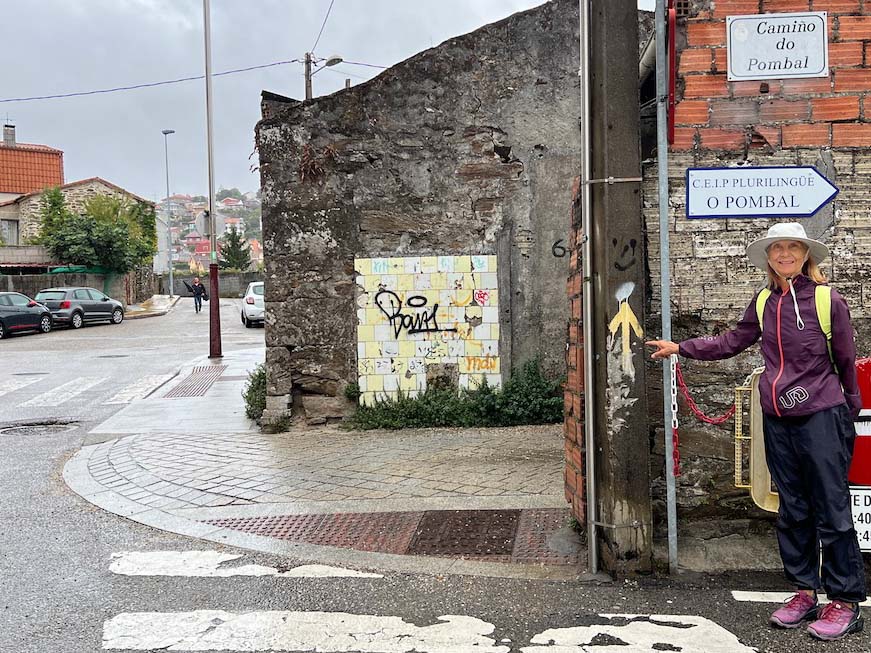
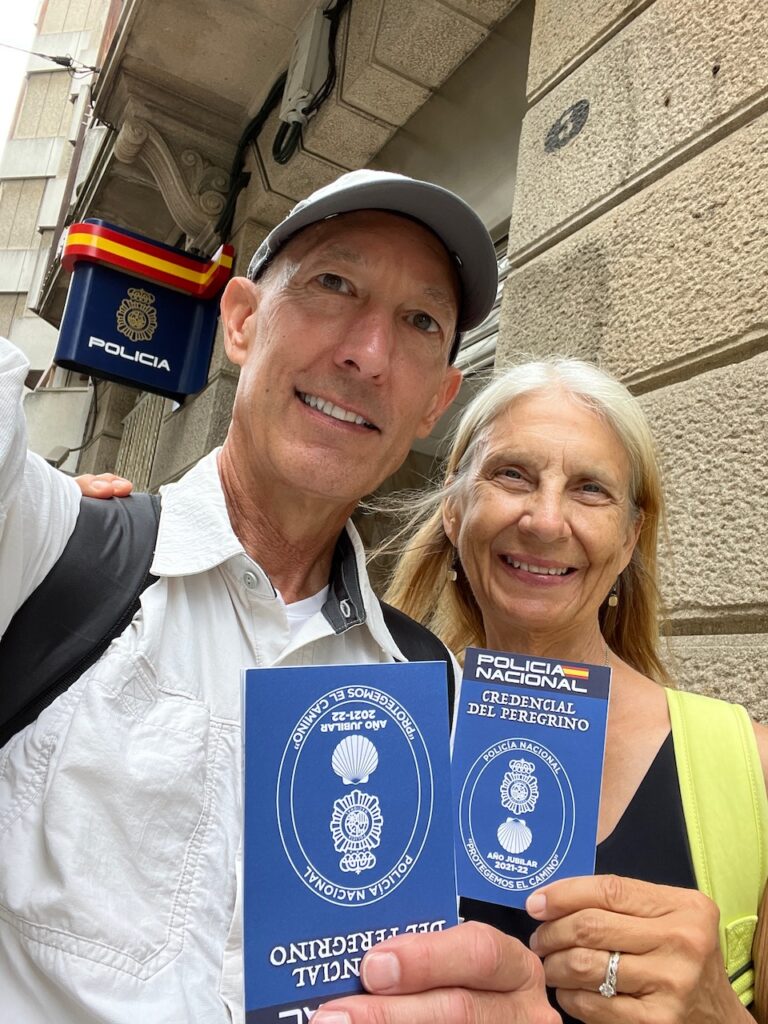
Before starting the journey we got our Pilgrim’s Passport at the local police station. 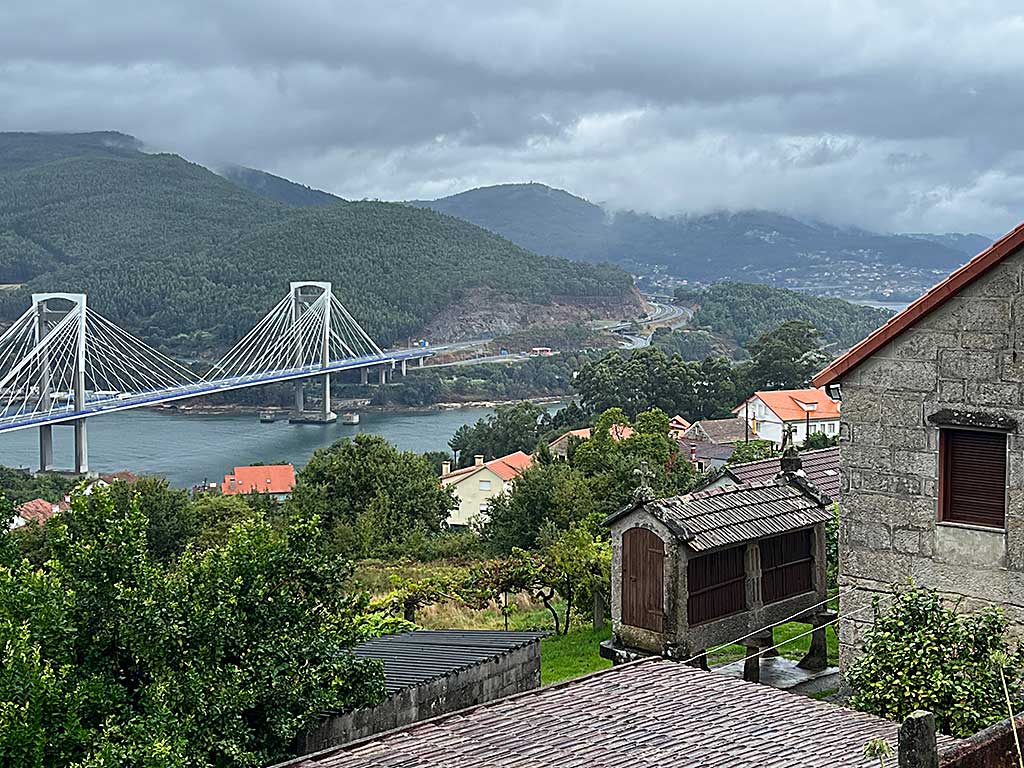
This part of the route is high above the Ria De Vigo waterway.
Day 2, Redondela to Arcade. Redondela is a small town known locally for the two railroad bridges that hover high over the main part of town.
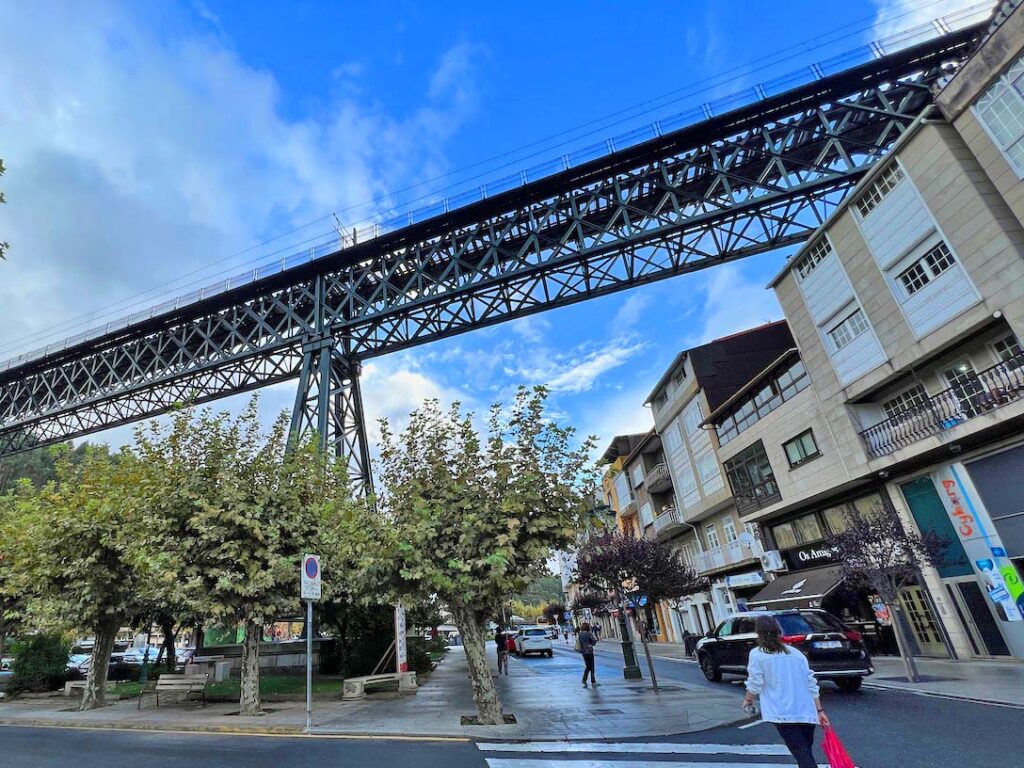
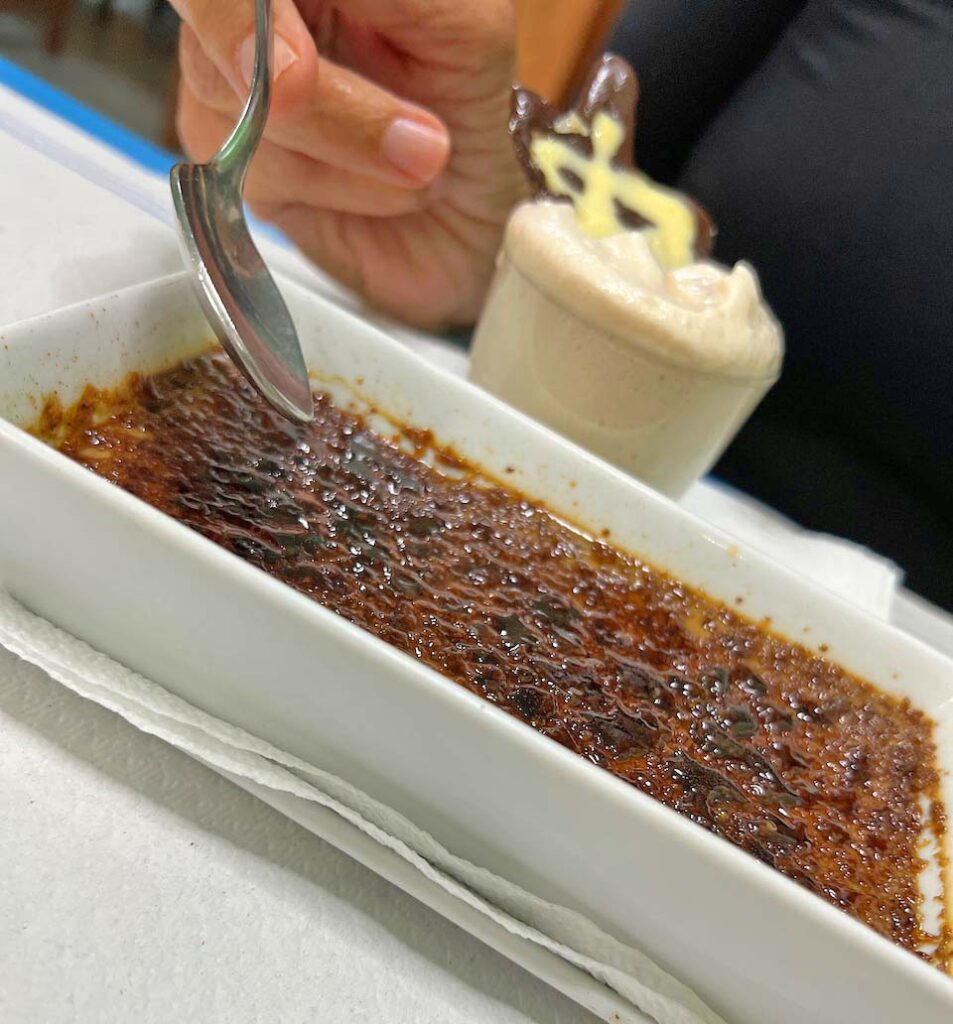
Cindy’s dinner dessert was Crema Cafe con Espuma de Orujo (coffe mousse with crème foam) it was amazing. 
Rainbow bench in Redondela. Spain.
Day 3, Arcade to Pontevedra took us across an old one-lane stone bridge and then through the rolling hills of the town’s outskirts.

Day 4, Pontevedra to Caldas de Reis led through vineyards and woods.
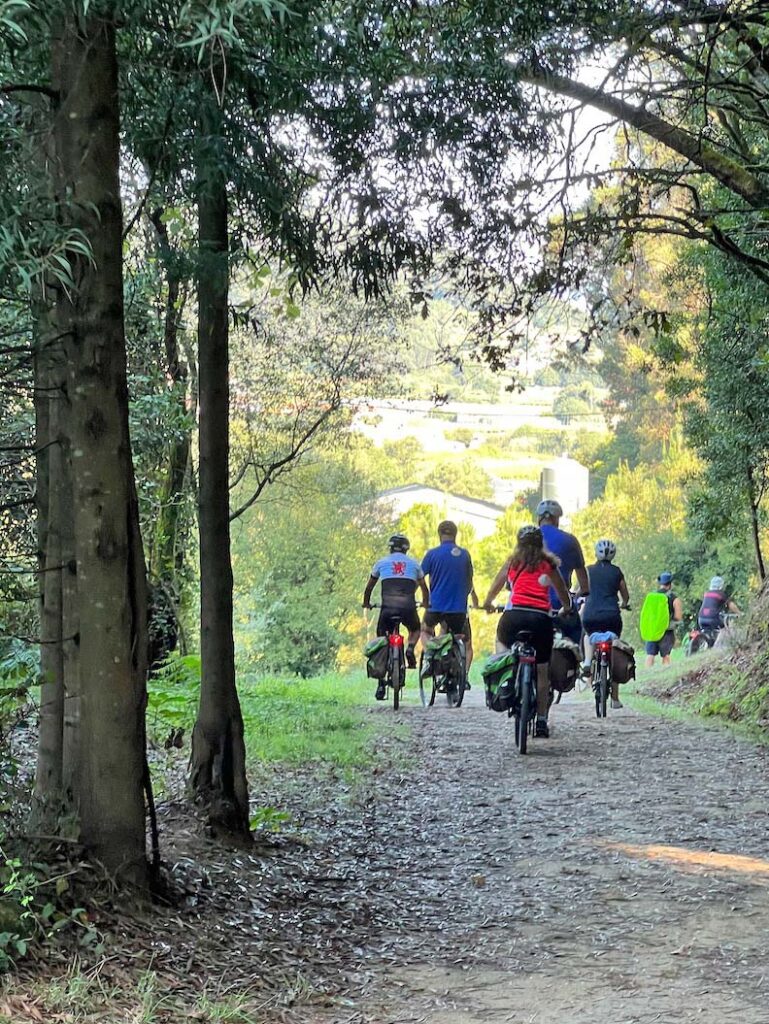
Some people do the Camino on bicycles. 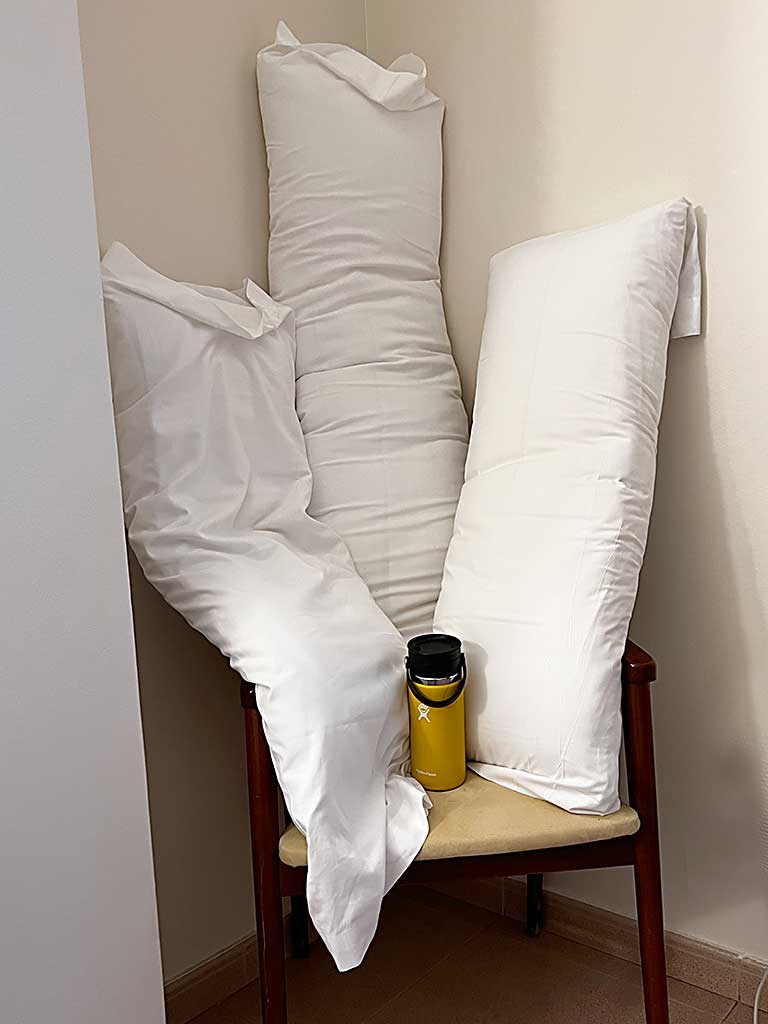
Several of our hotels had a single super long pillow on the bed, when we asked for two separate pillows, they provided two “almost super long” ones!
Day 5, Caldas de Reis to Padron took us past this old church and its above-ground burial vaults topped with crosses.
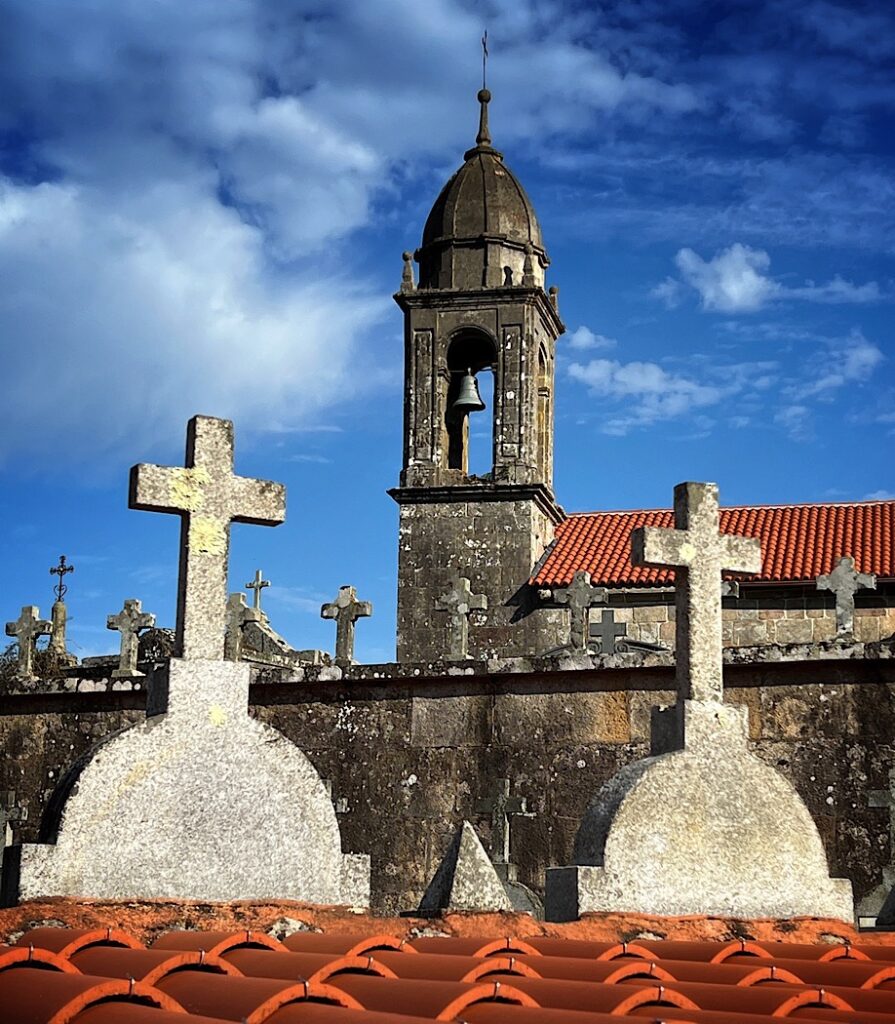
Day 6, Padron to Teo. A common sight was these old stone pools fed by a running fountain, it wasn’t hot enough to entice us.

Day 7, Teo to Santiago. Our endpoint of the walk. The cathedral houses the Tree of Jesse pillar marked with grooves from centuries of hands, the statue of St James and the Tomb of the Saint where thanks are given for all that has been encountered on the journey.
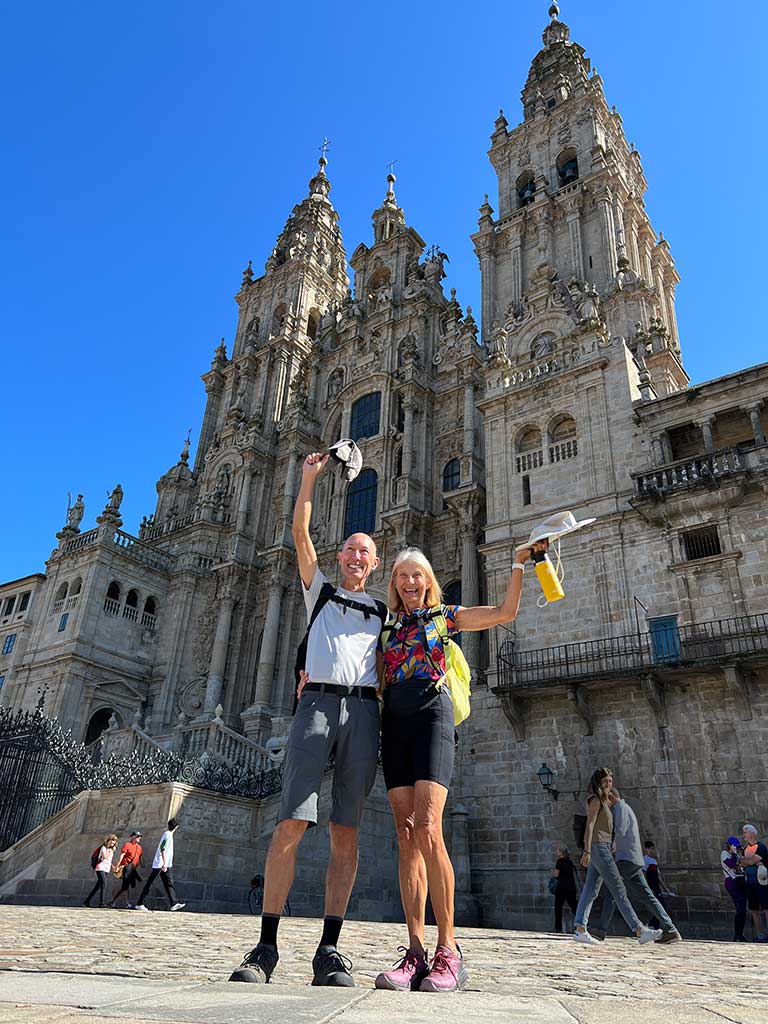
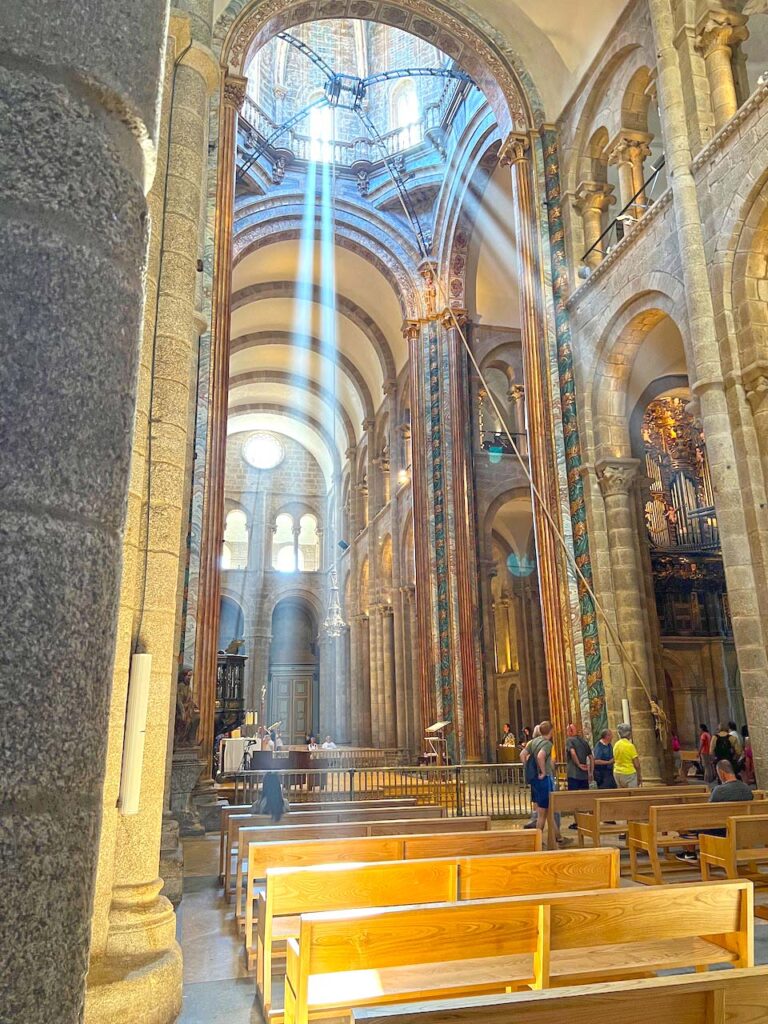
Inside the cathedral. 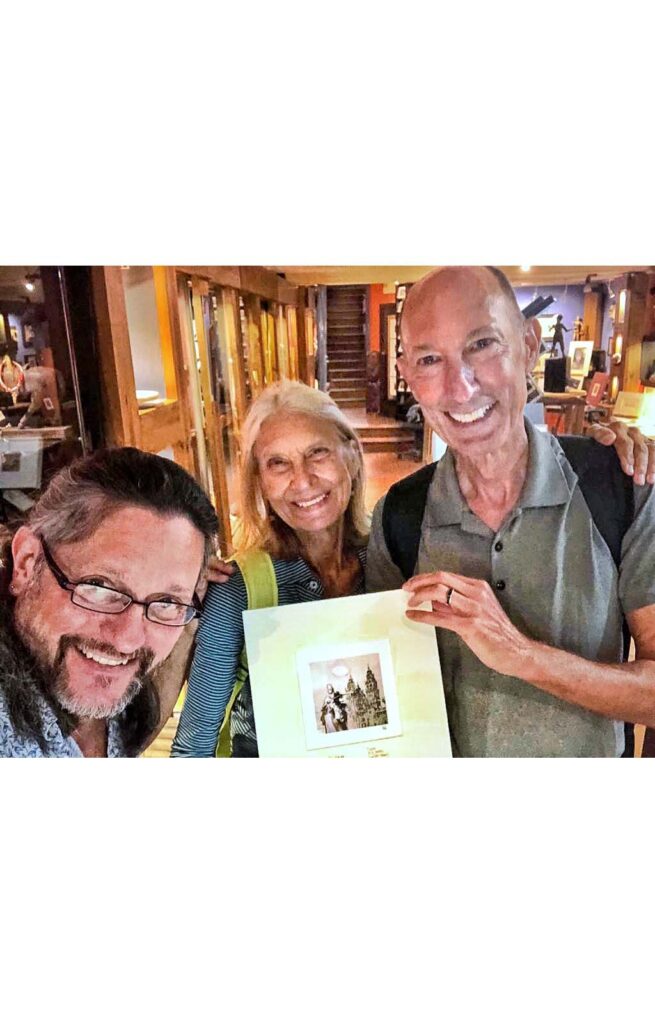
Beautiful artwork commemorating our Camino, created at the Zamo Tamay studio.
